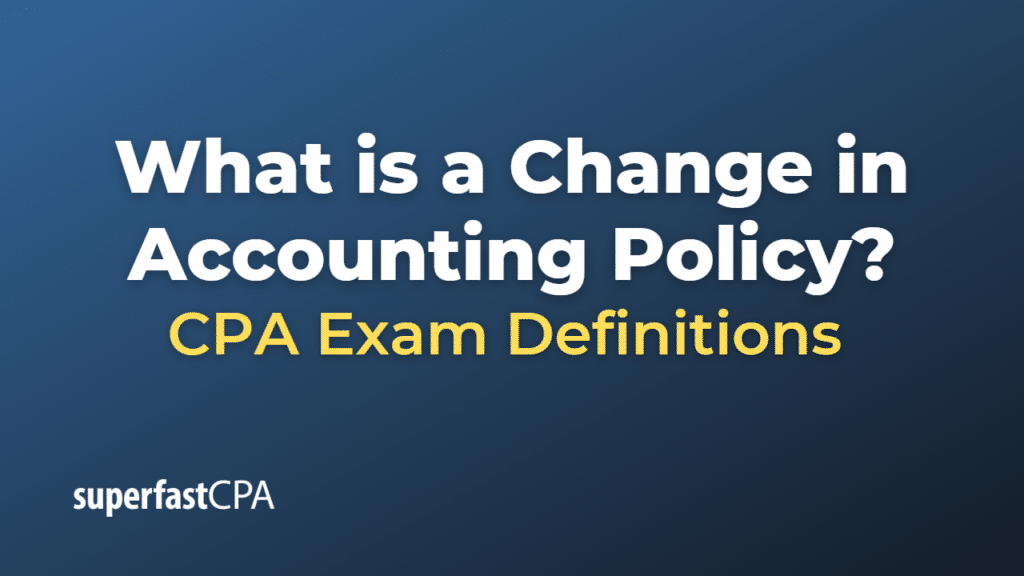Change in Accounting Policy
A change in accounting policy refers to a shift in the method or approach used to apply an accounting principle in the preparation of an entity’s financial statements. This change typically occurs when a company voluntarily adopts a new accounting standard, or when an existing accounting standard is updated or replaced by a new one.
Accounting policies are the specific principles, bases, conventions, rules, and practices that an entity applies in preparing and presenting its financial statements. These policies are essential for ensuring that financial statements are consistent, comparable, and reliable.
When a company changes its accounting policy, it is usually required to apply the new policy retrospectively, meaning it should adjust the financial statements for prior periods as if the new policy had always been in place. This restatement allows users of financial statements to compare the company’s financial results across different periods consistently.
However, in some cases, retrospective application may be impractical or not required by the accounting standards. In such instances, the change in accounting policy is applied prospectively, affecting the current and future periods only.
It is important to differentiate a change in accounting policy from a change in accounting estimate or an error correction. A change in accounting estimate refers to an adjustment made to the reported financial figures due to new information or improved knowledge that affects the assumptions used in previous financial statements. An error correction involves adjusting a material misstatement in the financial statements caused by an error, such as a mistake in calculations or the application of an accounting principle. These changes are generally treated differently in financial reporting.
Example of a Change in Accounting Policy
Let’s consider an example of a change in accounting policy involving the method of inventory valuation.
A retail company has been using the First-In, First-Out (FIFO) method to value its inventory for several years. The FIFO method assumes that the first items purchased or produced are the first ones to be sold, and the remaining inventory consists of the most recently purchased or produced items.
After conducting a thorough analysis, the company’s management decides to change its inventory valuation method to the Last-In, First-Out (LIFO) method. They believe that the LIFO method would provide a better match between the cost of goods sold and the company’s current replacement costs in a period of rising prices, resulting in more accurate financial reporting.
In this example, the shift from the FIFO method to the LIFO method represents a change in accounting policy.
To implement this change, the company typically needs to restate its financial statements for prior periods as if the LIFO method had always been used, ensuring consistency and comparability across different reporting periods. This restatement may involve recalculating the cost of goods sold, inventory balances, and related financial ratios for the affected periods.
However, if retrospective application is deemed impractical or not required by the accounting standards, the company may apply the change in accounting policy prospectively, meaning it will use the LIFO method for the current and future periods only, without restating the prior periods’ financial statements.
It is crucial for the company to disclose the nature of the change in accounting policy, the reasons for the change, and the financial impact of the change in its financial statements’ notes. This disclosure allows users of financial statements to understand the effects of the change on the company’s financial performance and position.













